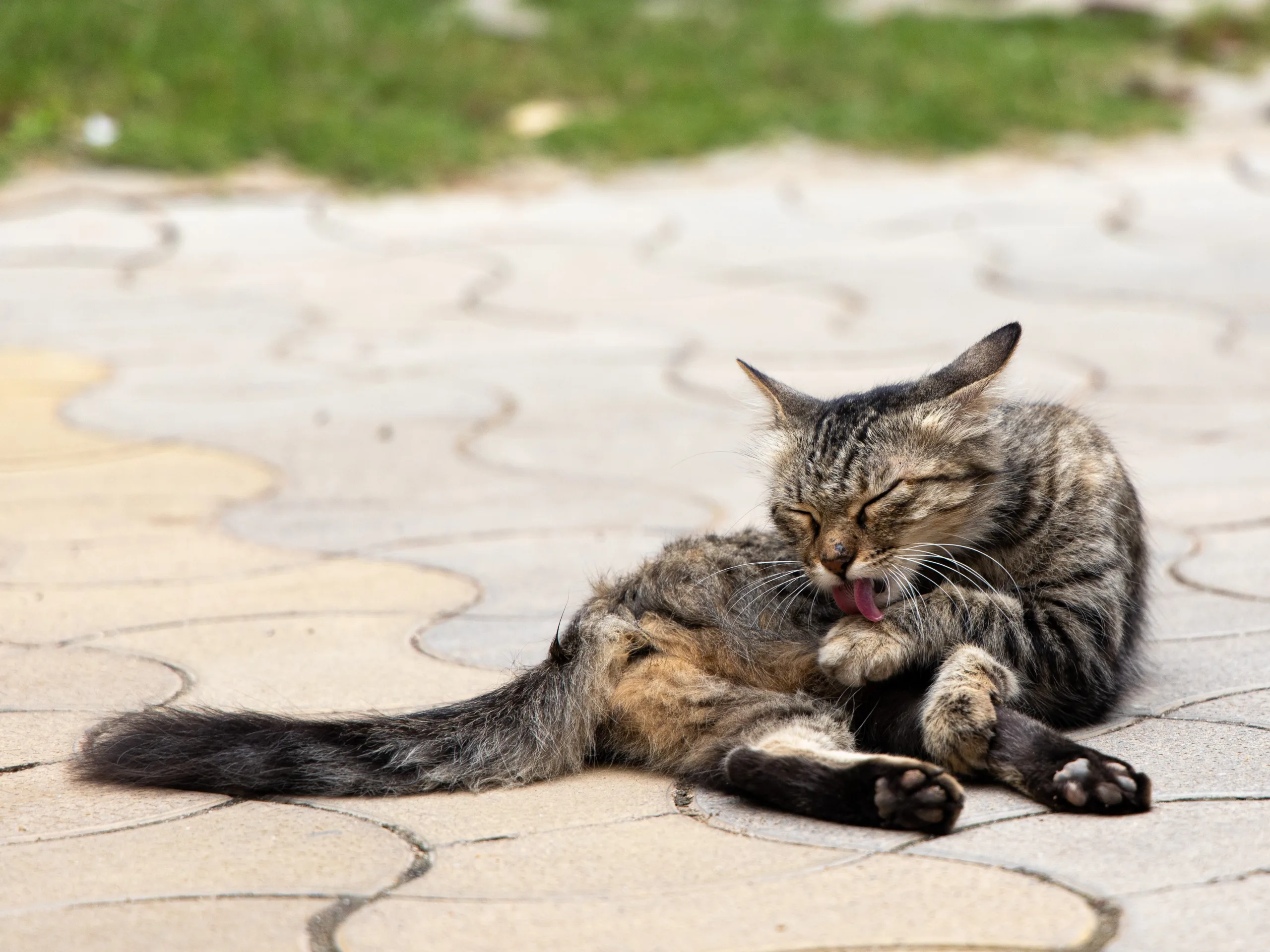How Clean Are Cats? Cats are renowned for their meticulous grooming habits, often spending a significant portion of their day engaged in self-care. From licking their fur to cleaning their paws, these furry companions seem to have cleanliness down to an art form. In this article, we will delve into the hygiene habits of cats, explore the reasons behind their seemingly obsessive grooming, and address common questions about the cleanliness of cats.
For more about cats click here
The Pinnacle of Self-Care:
Cats are known for their fastidious grooming routines, which serve several essential purposes beyond just maintaining cleanliness:
- Thermoregulation: Grooming helps cats regulate their body temperature by distributing natural oils evenly over their fur. These oils also provide a protective barrier against the elements.
- Sensory Stimulation: Cats have scent glands on their bodies, and grooming helps spread their unique scent. This territorial marking behavior is part of their communication with other cats.
- Bonding and Social Interaction: Cats often groom each other as a form of bonding and socializing within a group. This behavior is especially prominent in households with multiple cats.
- Health Maintenance: Grooming removes dirt, debris, and parasites from the fur, reducing the risk of skin infections. Cats’ licking can also aid in wound healing by keeping wounds clean.
Grooming Rituals:
Cats engage in various grooming behaviors to ensure their hygiene and well-being:
1. Licking and Cleaning:
Cats use their rough tongues to lick and clean every inch of their bodies. This action not only removes dirt but also stimulates blood circulation and promotes healthy fur growth.
2. Face Cleaning:
Cats use their paws to dampen them and then use their paws to wipe their faces, much like humans using a washcloth. This helps clean sensitive areas like the eyes and mouth.
3. Paw Inspection:
Cats often lick their paws and then use them to clean their faces. This action helps them keep their paw pads clean and inspect for any abnormalities.
4. Flea Removal:
Cats may chew on certain areas of their bodies to remove fleas and other parasites. While this may seem like a grooming behavior, it can also be a response to discomfort.
Common Questions About Cat Cleanliness:
Q1: Are cats very hygienic? Yes, cats are naturally inclined to be hygienic animals. Their grooming behaviors are essential for their overall well-being and health.
Q2: Are cats cleaner than dogs? Cats and dogs have different grooming habits, but both species have their own ways of maintaining cleanliness. Cats are known for their self-grooming, while dogs may require more regular baths.
Q3: Are cats clean to touch? Cats’ grooming habits help keep their fur relatively clean. However, if a cat is heavily shedding or has been outdoors, its fur might have dirt or allergens. Regular brushing can help keep a cat’s coat clean and reduce shedding.
Q4: Should you let your cat lick you? While some people might find it endearing, allowing a cat to lick you can have drawbacks. Cats’ mouths can harbor bacteria, and excessive licking can lead to skin irritation. It’s best to redirect their grooming behavior to toys or objects.
Q5: Do cat licks clean you? Cat licks are primarily focused on grooming themselves and not intended for cleaning humans. In fact, their rough tongues can lead to skin irritation or minor scratches.
Maintaining Cat Hygiene:
While cats are naturally clean animals, there are steps you can take to ensure their hygiene:
- Regular Brushing: Regular brushing helps prevent matting, reduces shedding, and removes dirt and debris from the fur.
- Provide Proper Grooming Tools: Invest in grooming tools such as brushes and combs that are suitable for your cat’s coat type.
- Regular Veterinary Care: Regular vet visits can address any skin or coat issues, ensuring your cat’s hygiene and overall health.
- Clean Living Environment: Regularly clean your cat’s living area, including litter boxes and bedding, to maintain a clean and comfortable space.
Conclusion:
Cats are innately clean creatures with a well-developed grooming routine that serves multiple purposes beyond hygiene. Their self-care habits are essential for maintaining body temperature, communicating with other cats, and overall well-being. While cats’ cleanliness is remarkable, responsible pet ownership involves supporting their grooming habits with regular maintenance, veterinary care, and safe interactions.
Click here for more
